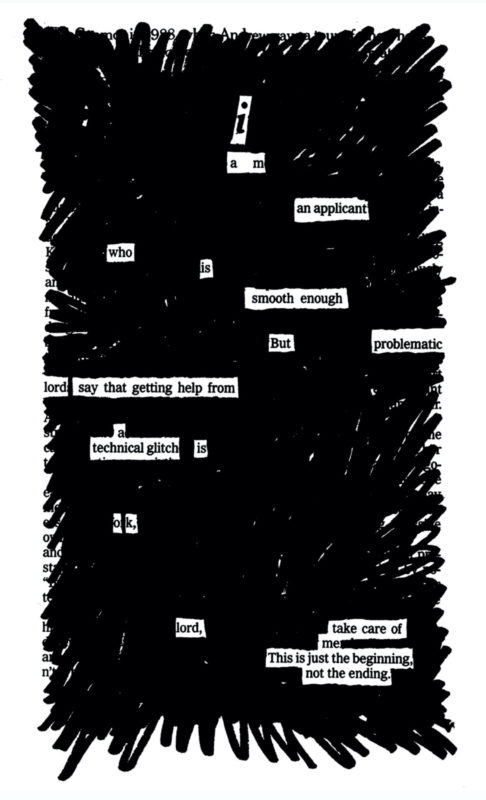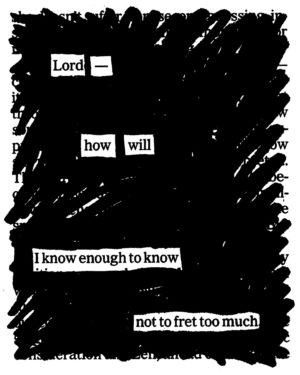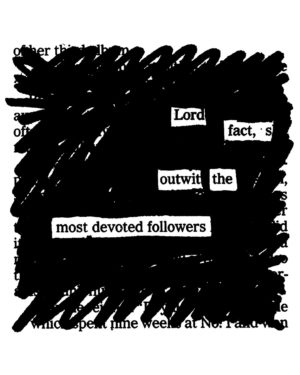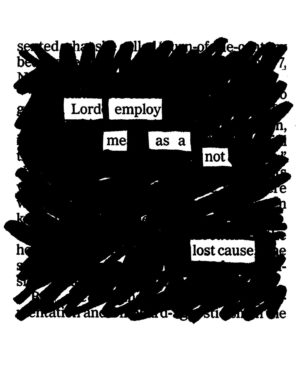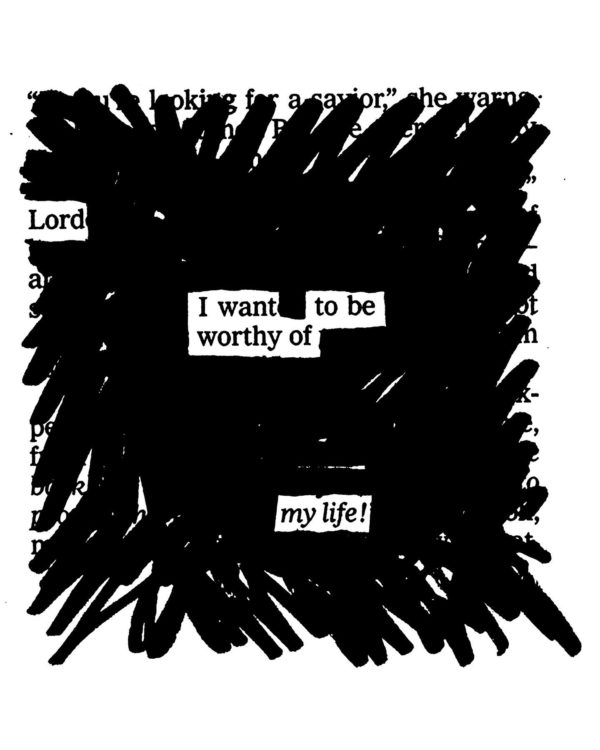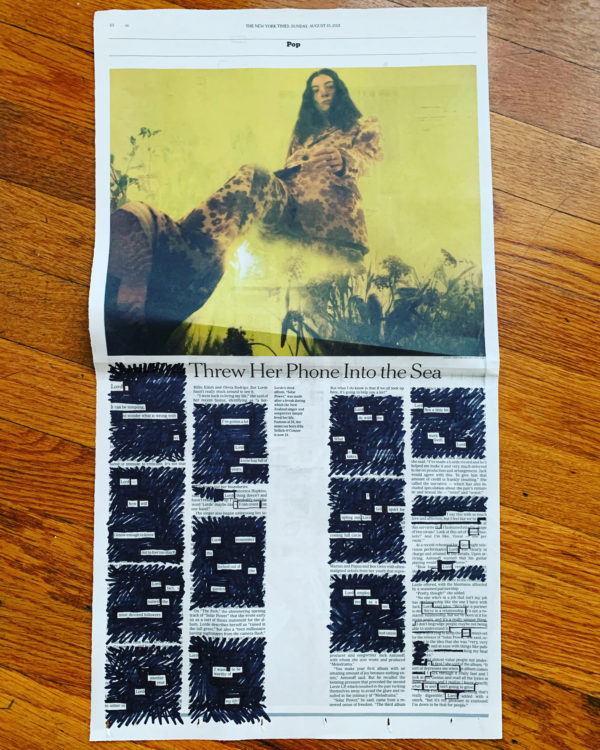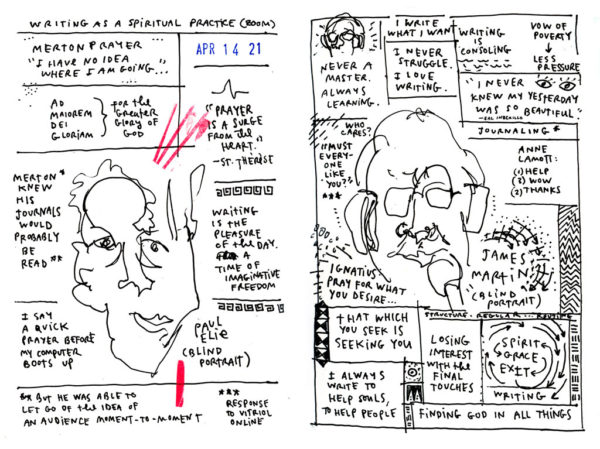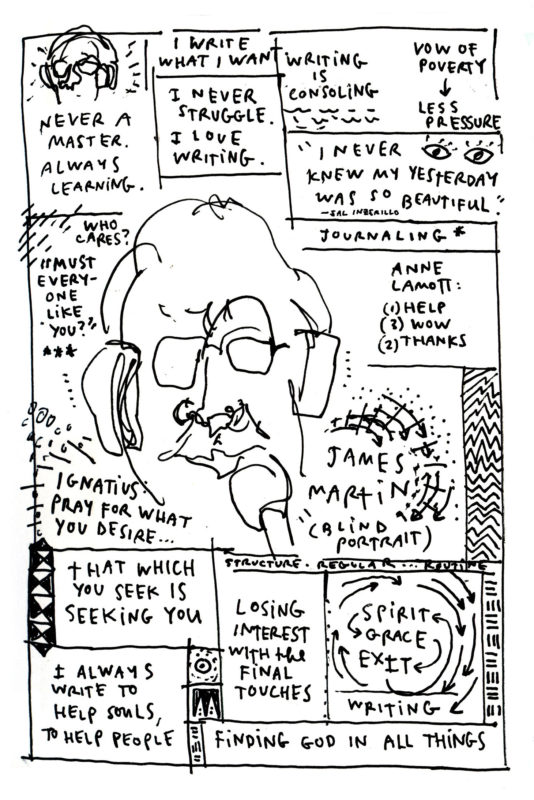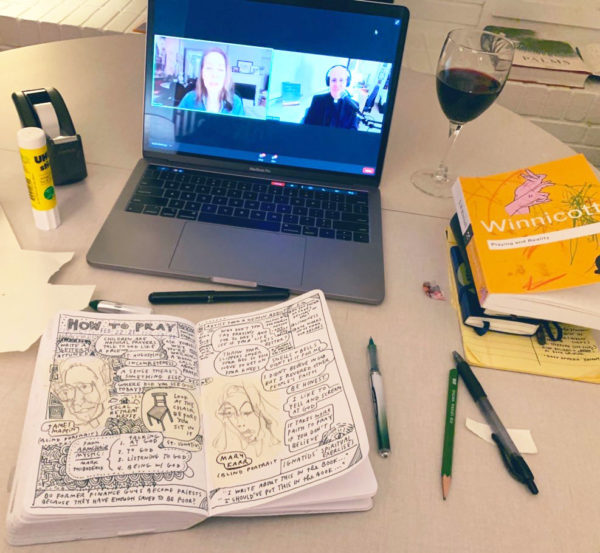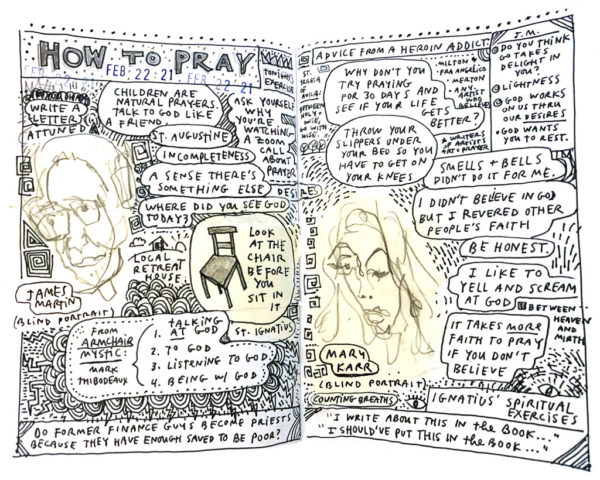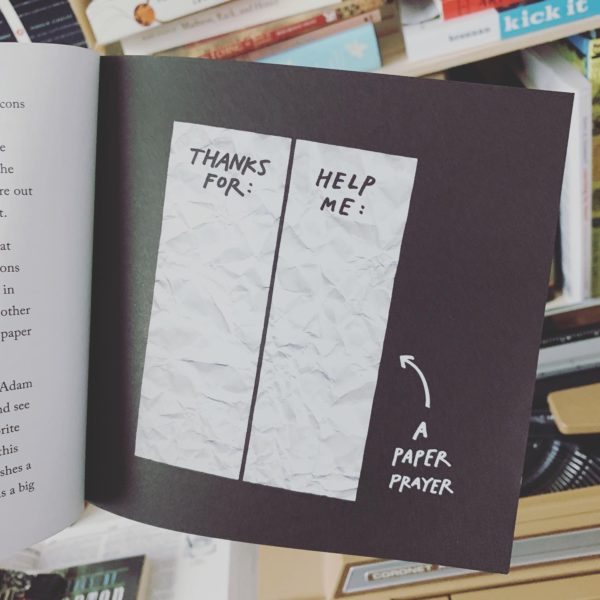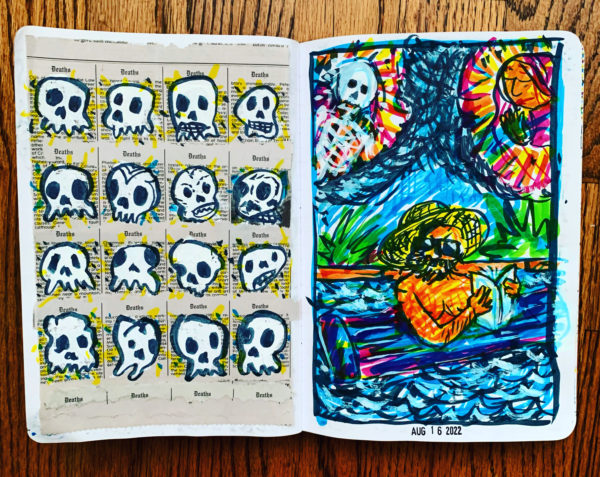
In Latin, the term “ex-voto”, is described as: a votive offering of thanks to a sacred entity for a miraculous act.
I first heard of ex-voto when researching the cartoonist Saul Steinberg’s bicycling habit. From the year 1992 in his chronology:
August, tells Aldo Buzzi that he fell off his bicycle but was not seriously hurt. “In my mind I see the disasters I avoided—teeth, bones, eyes—and I understand the concept of the Ex-Voto.” He makes an apotropaic drawing…
“Apotropaic” means “supposedly having the power to avert evil influences or bad luck.”
Here’s that drawing:
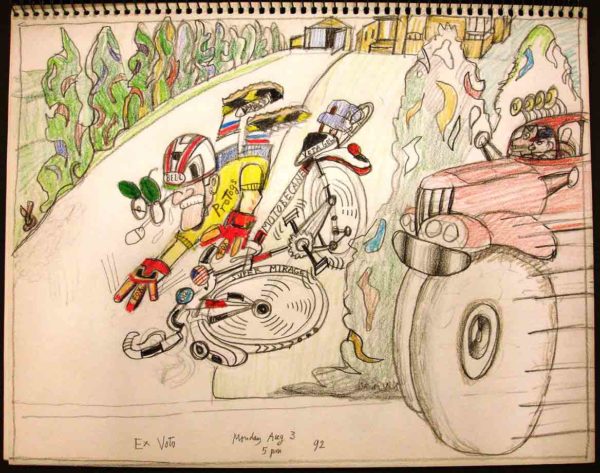
Note the brand names on all of his gear. In another letter to Aldo Buzzi, he wrote about his cycling commute:
Early in the morning, then, I’m on the bicycle to Amagansett, all of it uphill, and for a little bit along the ocean, etc. The return trip, downhill, much quicker. I wear a plastic helmet due to the danger from local yokels in their trucks, who hate cyclists and drive too fast and too close.
Here’s another ex-voto drawing of him on his bicycle from 1992:
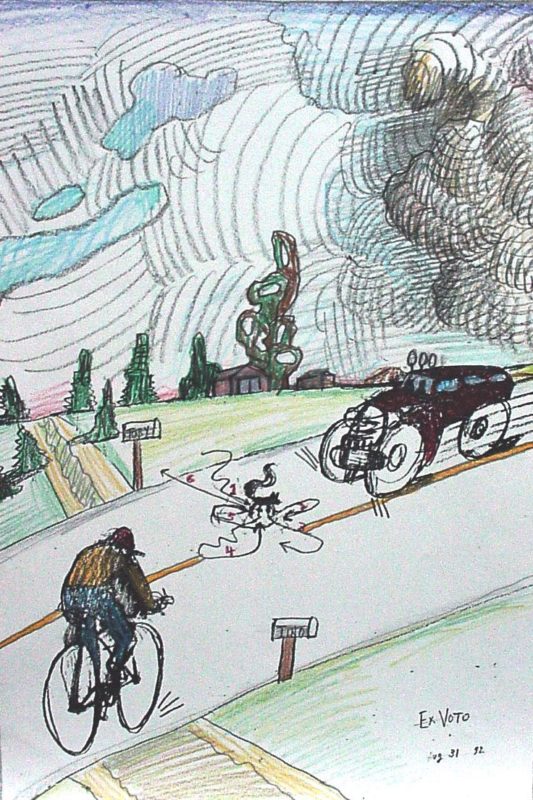
I’m not sure when Steinberg first became inspired by ex-votos. There were votive paintings in his native Italy, but he also made several trips to Mexico, first in the late 40s with Hedda Sterne, who was down there hanging out with the great Miguel Covarrubias and others. He first started making his own around 1983.
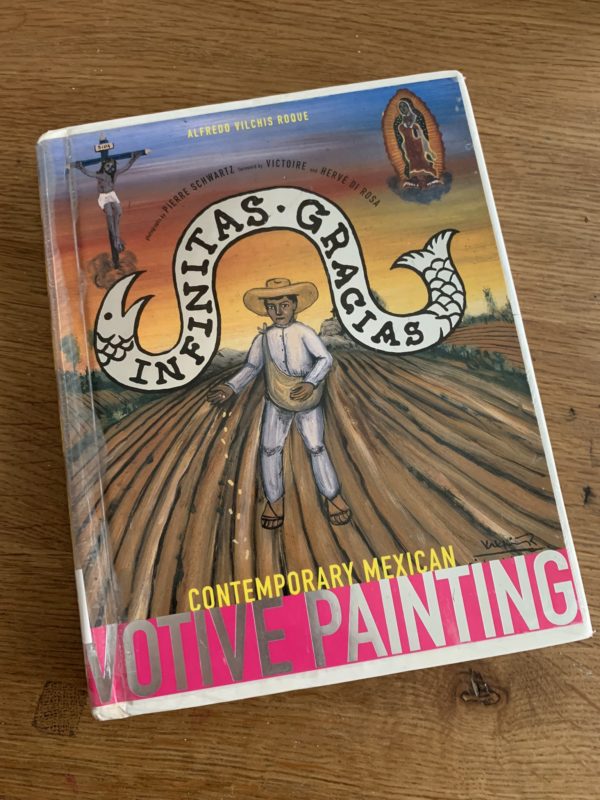
Not too long after I saw Steinberg’s drawings, I was at the library and came across this book of contemporary Mexican votive paintings by Alfredo Vilchis Roque and his three songs, made from the 30s to the present day. The book is divided up into sections based on subject matter: “Parenthood,” “Relationships,” “Emigration,” “Urban Violence,” “Illness,” etc. My favorites were the paintings thanking saints for not getting caught cheating:
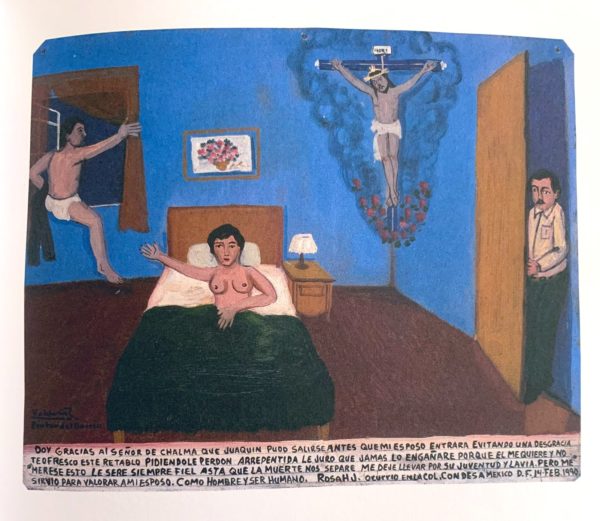
You can see why a cartoonist might be inspired by this form of pictures and words. Your typical ex-voto has a scene of a “near miss” or a miracle, with a saint or religious figure looking over the scene, and words underneath giving thanks. This caption reads:
I give thanks to Lord Jesus of Chalma that Joaquin was able to get away before my husband came in, avoiding a disaster. I offer Him this retablo, begging His forgiveness. I swear in remorse never to cheat [again], because my husband loves me and doesn’t deserve it. I will always be faithful to him till death do us part. I let myself get carried away by [Joaquín’s] youth and smooth talk, but this has made me appreciate my husband, as a man and a human being. Rosa H. J. This took place in Col. Condesa, Mexico D.F. February 14, 1990.
In the book Alfredo Vilchis Roque cites Frida Kahlo as one of his biggest influences, which makes sense because Kahlo and her husband Diego Rivera were avid collectors of ex-votos, decorating their house in Mexico City with hundreds of them. Here is an image I found of part of their collection:
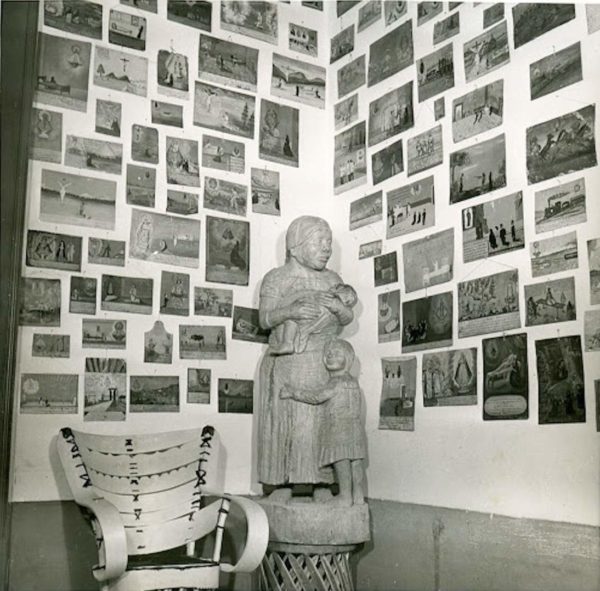
You can really zoom in and get a look at some of these paintings in this photo.
It’s fun to trace the influence of ex-voto on Kahlo’s work in particular, and put some of her paintings next to ex-votos being made at the same time:
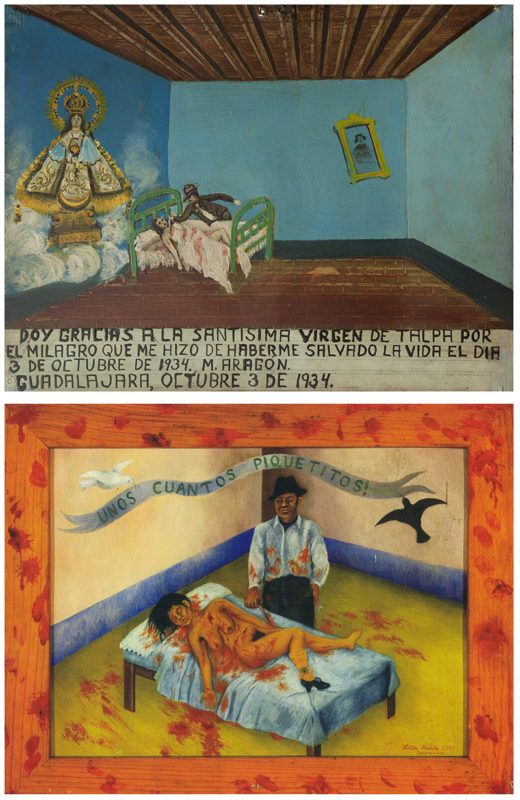
* * *
For more reading: “The Vivid Violence and Divine Healing of Ex-Voto Paintings”

